
Vincent van Gogh Giclée Fine Art Prints 1 of 17
1853-1890
Dutch Post-Impressionist Painter
The trajectory of Vincent Willem van Gogh's brief existence presents a compelling study in artistic determination shadowed by profound psychological turbulence. Born on 30 March 1853 in Groot-Zundert, in the Catholic province of North Brabant, van Gogh emerged from a milieu of middle-class propriety into a life marked by restless searching and ultimate artistic achievement. His death at thirty-seven, following a self-inflicted gunshot wound in July 1890, truncated a career that had produced approximately 2,100 artworks in just over a decade, with the most significant portion concentrated in his final two years.
The early formation of van Gogh's character occurred within a household headed by Theodorus van Gogh, a minister of the Dutch Reformed Church, and Anna Cornelia Carbentus, who came from prosperous stock in The Hague. The psychological weight of being given the name of both his grandfather and a stillborn brother cannot be discounted in understanding van Gogh's later preoccupations with identity and purpose. His childhood, which he would later characterize as "austere and cold, and sterile," established patterns of isolation and intensity that would persist throughout his life.
Van Gogh's initial foray into the art world came through commerce rather than creation. His uncle Cent secured him a position at Goupil & Cie in The Hague in 1869, leading to a transfer to London in 1873. This period represented perhaps the most conventionally successful phase of his life - he earned more than his father and appeared to be establishing himself within respectable society. However, the rejection by his landlady's daughter, Eugénie Loyer, precipitated a crisis that would redirect his energies toward religious fervor and eventual disillusionment with art dealing as a profession.
The subsequent years witnessed van Gogh's attempts to find meaning through religious vocation. His time as a missionary in the Borinage, a coal-mining district in Belgium, revealed both his capacity for extreme empathy and his inability to conform to institutional expectations. Living in deliberate poverty among miners, he undermined what church authorities deemed the "dignity of the priesthood." This period of rejection and failure paradoxically prepared the ground for his artistic awakening.
Van Gogh's decision to become an artist in 1880, at the relatively advanced age of twenty-seven, marked the beginning of an extraordinarily compressed period of artistic development. His brother Theo's financial support - a relationship documented in hundreds of letters that provide invaluable insight into Vincent's theoretical and emotional evolution - enabled this transformation. The correspondence reveals a mind grappling with technical challenges while simultaneously developing a sophisticated understanding of art's expressive possibilities.
The Dutch period of van Gogh's work, encompassing his time in The Hague, Nuenen, and Antwerp, demonstrates a methodical approach to mastering fundamental skills. His palette remained predominantly earthbound, dominated by the browns and grays that characterized The Potato Eaters of 1885. This painting, ambitious in its multi-figure composition and social commentary, revealed both his limitations and his emerging voice. Theo's criticism of its darkness proved prescient - van Gogh would need to revolutionize his approach to color to achieve his mature style.
Paris, where van Gogh lived with Theo from 1886 to 1888, provided the crucial exposure to Impressionism and Post-Impressionism that would catalyze his transformation. The encounter with the work of Monet, Signac, and particularly the color theories that underpinned Neo-Impressionism, liberated van Gogh from his Dutch moorings. His experiments with complementary colors and broken brushwork during this period laid the groundwork for the explosive creativity that would follow.
The Arles period, beginning in February 1888, represents the apotheosis of van Gogh's artistic powers. The southern light seemed to unlock something fundamental in his vision - the yellows that would become his signature burst forth in works of remarkable confidence and innovation. The sunflower series, undertaken in anticipation of Gauguin's visit, demonstrates not merely technical mastery but a symbolic language entirely his own. These paintings transcend botanical study to become meditations on vitality, decay, and the cycles of existence.
Gauguin's arrival and departure, culminating in the notorious ear-mutilation incident of December 1888, marked a violent rupture in van Gogh's psychological equilibrium. The exact circumstances remain contested, but the aftermath is clear: van Gogh's final eighteen months would be punctuated by episodes of acute mental distress interspersed with periods of lucid, even transcendent creativity.
The works produced at the Saint-Paul-de-Mausole asylum in Saint-Rémy reveal an artist capable of transforming personal anguish into universal expression. The Starry Night, painted in June 1889, achieves a synthesis of observation and imagination that van Gogh himself worried had gone "too far" from reality. Yet this departure from strict naturalism allowed him to capture what he termed "the tremendous passions of humanity" through purely visual means.
Van Gogh's final phase in Auvers-sur-Oise, under the care of Dr. Paul Gachet, produced works of remarkable emotional range. The wheat fields that dominated his last canvases can be read as both celebrations of natural abundance and premonitions of mortality. Wheatfield with Crows, painted days before his death, employs a palette and compositional structure that convey profound unease without descending into mere illustration of mental states.
The construction of van Gogh's posthumous reputation owes much to the devoted efforts of his sister-in-law, Jo van Gogh-Bonger, who managed his estate with remarkable acuity. The publication of the letters, the strategic placement of works in exhibitions, and the gradual building of critical consensus transformed van Gogh from a marginal figure into a central protagonist in the narrative of modern art.
What distinguishes van Gogh's achievement is not merely the intensity of his vision or the tragedy of his biography, but the rigorous intelligence he brought to the problem of translating sensation into paint. His systematic exploration of color relationships, his innovative approaches to texture and mark-making, and his ability to invest landscape and still life with psychological resonance established new possibilities for twentieth-century art. That only one painting sold during his lifetime - The Red Vineyard, purchased by Anna Boch - serves as a sobering reminder of how revolutionary vision often goes unrecognized by contemporary taste.
Van Gogh's legacy resides not in the romanticized notion of the tortured genius, but in his demonstration that art could serve as a vehicle for the most profound human experiences - joy, anguish, spiritual yearning, and the search for meaning in an increasingly secular age. His influence on Expressionism, Fauvism, and subsequent movements stems from his liberation of color from merely descriptive function and his assertion that subjective experience could achieve universal significance through the medium of paint.
The early formation of van Gogh's character occurred within a household headed by Theodorus van Gogh, a minister of the Dutch Reformed Church, and Anna Cornelia Carbentus, who came from prosperous stock in The Hague. The psychological weight of being given the name of both his grandfather and a stillborn brother cannot be discounted in understanding van Gogh's later preoccupations with identity and purpose. His childhood, which he would later characterize as "austere and cold, and sterile," established patterns of isolation and intensity that would persist throughout his life.
Van Gogh's initial foray into the art world came through commerce rather than creation. His uncle Cent secured him a position at Goupil & Cie in The Hague in 1869, leading to a transfer to London in 1873. This period represented perhaps the most conventionally successful phase of his life - he earned more than his father and appeared to be establishing himself within respectable society. However, the rejection by his landlady's daughter, Eugénie Loyer, precipitated a crisis that would redirect his energies toward religious fervor and eventual disillusionment with art dealing as a profession.
The subsequent years witnessed van Gogh's attempts to find meaning through religious vocation. His time as a missionary in the Borinage, a coal-mining district in Belgium, revealed both his capacity for extreme empathy and his inability to conform to institutional expectations. Living in deliberate poverty among miners, he undermined what church authorities deemed the "dignity of the priesthood." This period of rejection and failure paradoxically prepared the ground for his artistic awakening.
Van Gogh's decision to become an artist in 1880, at the relatively advanced age of twenty-seven, marked the beginning of an extraordinarily compressed period of artistic development. His brother Theo's financial support - a relationship documented in hundreds of letters that provide invaluable insight into Vincent's theoretical and emotional evolution - enabled this transformation. The correspondence reveals a mind grappling with technical challenges while simultaneously developing a sophisticated understanding of art's expressive possibilities.
The Dutch period of van Gogh's work, encompassing his time in The Hague, Nuenen, and Antwerp, demonstrates a methodical approach to mastering fundamental skills. His palette remained predominantly earthbound, dominated by the browns and grays that characterized The Potato Eaters of 1885. This painting, ambitious in its multi-figure composition and social commentary, revealed both his limitations and his emerging voice. Theo's criticism of its darkness proved prescient - van Gogh would need to revolutionize his approach to color to achieve his mature style.
Paris, where van Gogh lived with Theo from 1886 to 1888, provided the crucial exposure to Impressionism and Post-Impressionism that would catalyze his transformation. The encounter with the work of Monet, Signac, and particularly the color theories that underpinned Neo-Impressionism, liberated van Gogh from his Dutch moorings. His experiments with complementary colors and broken brushwork during this period laid the groundwork for the explosive creativity that would follow.
The Arles period, beginning in February 1888, represents the apotheosis of van Gogh's artistic powers. The southern light seemed to unlock something fundamental in his vision - the yellows that would become his signature burst forth in works of remarkable confidence and innovation. The sunflower series, undertaken in anticipation of Gauguin's visit, demonstrates not merely technical mastery but a symbolic language entirely his own. These paintings transcend botanical study to become meditations on vitality, decay, and the cycles of existence.
Gauguin's arrival and departure, culminating in the notorious ear-mutilation incident of December 1888, marked a violent rupture in van Gogh's psychological equilibrium. The exact circumstances remain contested, but the aftermath is clear: van Gogh's final eighteen months would be punctuated by episodes of acute mental distress interspersed with periods of lucid, even transcendent creativity.
The works produced at the Saint-Paul-de-Mausole asylum in Saint-Rémy reveal an artist capable of transforming personal anguish into universal expression. The Starry Night, painted in June 1889, achieves a synthesis of observation and imagination that van Gogh himself worried had gone "too far" from reality. Yet this departure from strict naturalism allowed him to capture what he termed "the tremendous passions of humanity" through purely visual means.
Van Gogh's final phase in Auvers-sur-Oise, under the care of Dr. Paul Gachet, produced works of remarkable emotional range. The wheat fields that dominated his last canvases can be read as both celebrations of natural abundance and premonitions of mortality. Wheatfield with Crows, painted days before his death, employs a palette and compositional structure that convey profound unease without descending into mere illustration of mental states.
The construction of van Gogh's posthumous reputation owes much to the devoted efforts of his sister-in-law, Jo van Gogh-Bonger, who managed his estate with remarkable acuity. The publication of the letters, the strategic placement of works in exhibitions, and the gradual building of critical consensus transformed van Gogh from a marginal figure into a central protagonist in the narrative of modern art.
What distinguishes van Gogh's achievement is not merely the intensity of his vision or the tragedy of his biography, but the rigorous intelligence he brought to the problem of translating sensation into paint. His systematic exploration of color relationships, his innovative approaches to texture and mark-making, and his ability to invest landscape and still life with psychological resonance established new possibilities for twentieth-century art. That only one painting sold during his lifetime - The Red Vineyard, purchased by Anna Boch - serves as a sobering reminder of how revolutionary vision often goes unrecognized by contemporary taste.
Van Gogh's legacy resides not in the romanticized notion of the tortured genius, but in his demonstration that art could serve as a vehicle for the most profound human experiences - joy, anguish, spiritual yearning, and the search for meaning in an increasingly secular age. His influence on Expressionism, Fauvism, and subsequent movements stems from his liberation of color from merely descriptive function and his assertion that subjective experience could achieve universal significance through the medium of paint.
393 Vincent van Gogh Artworks
Page 1 of 17
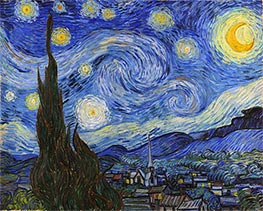
Giclée Canvas Print
$74.95
$74.95
SKU: 1101-VVG
Vincent van Gogh
Original Size:73.7 x 92.1 cm
Museum of Modern Art, New York, USA
Vincent van Gogh
Original Size:73.7 x 92.1 cm
Museum of Modern Art, New York, USA
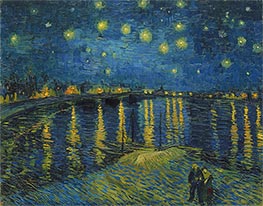
Giclée Canvas Print
$72.05
$72.05
SKU: 1249-VVG
Vincent van Gogh
Original Size:72.5 x 92 cm
Musee d'Orsay, Paris, France
Vincent van Gogh
Original Size:72.5 x 92 cm
Musee d'Orsay, Paris, France
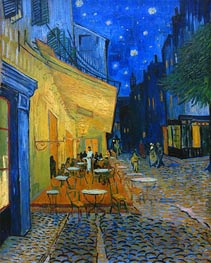
Giclée Canvas Print
$75.63
$75.63
SKU: 1251-VVG
Vincent van Gogh
Original Size:81 x 65.5 cm
Kroller-Mueller Museum, Otterlo, Netherlands
Vincent van Gogh
Original Size:81 x 65.5 cm
Kroller-Mueller Museum, Otterlo, Netherlands
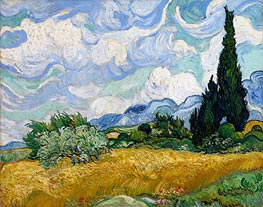
Giclée Canvas Print
$73.41
$73.41
SKU: 1145-VVG
Vincent van Gogh
Original Size:73 x 93.4 cm
Metropolitan Museum of Art, New York, USA
Vincent van Gogh
Original Size:73 x 93.4 cm
Metropolitan Museum of Art, New York, USA
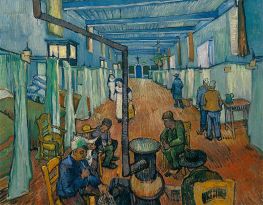
Giclée Canvas Print
$73.07
$73.07
SKU: 19917-VVG
Vincent van Gogh
Original Size:72 x 91 cm
Oskar Reinhart Museum, Winterthur, Switzerland
Vincent van Gogh
Original Size:72 x 91 cm
Oskar Reinhart Museum, Winterthur, Switzerland
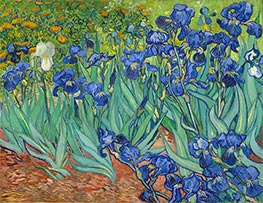
Giclée Canvas Print
$71.54
$71.54
SKU: 1102-VVG
Vincent van Gogh
Original Size:71 x 93 cm
J. Paul Getty Museum, Los Angeles, USA
Vincent van Gogh
Original Size:71 x 93 cm
J. Paul Getty Museum, Los Angeles, USA
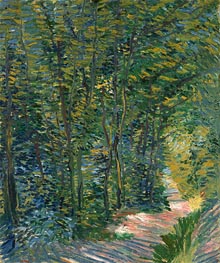
Giclée Canvas Print
$61.81
$61.81
SKU: 16616-VVG
Vincent van Gogh
Original Size:45.3 x 37.7 cm
Van Gogh Museum, Amsterdam, Netherlands
Vincent van Gogh
Original Size:45.3 x 37.7 cm
Van Gogh Museum, Amsterdam, Netherlands
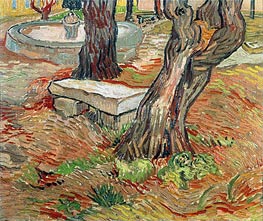
Giclée Canvas Print
$71.08
$71.08
SKU: 1186-VVG
Vincent van Gogh
Original Size:45 x 51 cm
Museu de Arte, Sao Paulo, Brazil
Vincent van Gogh
Original Size:45 x 51 cm
Museu de Arte, Sao Paulo, Brazil
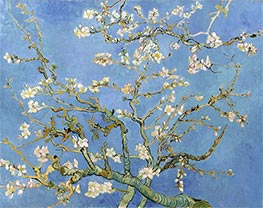
Giclée Canvas Print
$73.93
$73.93
SKU: 1203-VVG
Vincent van Gogh
Original Size:73.5 x 92 cm
Van Gogh Museum, Amsterdam, Netherlands
Vincent van Gogh
Original Size:73.5 x 92 cm
Van Gogh Museum, Amsterdam, Netherlands
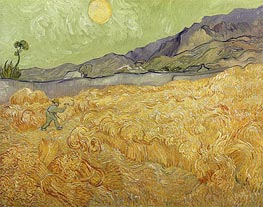
Giclée Canvas Print
$74.09
$74.09
SKU: 1154-VVG
Vincent van Gogh
Original Size:73 x 92 cm
Van Gogh Museum, Amsterdam, Netherlands
Vincent van Gogh
Original Size:73 x 92 cm
Van Gogh Museum, Amsterdam, Netherlands
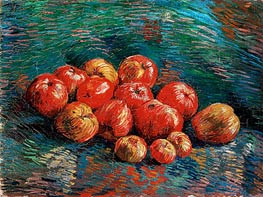
Giclée Canvas Print
$87.62
$87.62
SKU: 1325-VVG
Vincent van Gogh
Original Size:46 x 61.5 cm
Van Gogh Museum, Amsterdam, Netherlands
Vincent van Gogh
Original Size:46 x 61.5 cm
Van Gogh Museum, Amsterdam, Netherlands
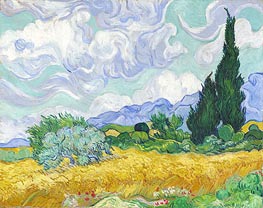
Giclée Canvas Print
$74.09
$74.09
SKU: 1161-VVG
Vincent van Gogh
Original Size:72 x 91 cm
National Gallery, London, UK
Vincent van Gogh
Original Size:72 x 91 cm
National Gallery, London, UK
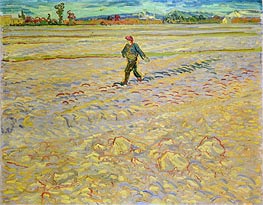
Giclée Canvas Print
$73.59
$73.59
SKU: 8320-VVG
Vincent van Gogh
Original Size:72 x 91.5 cm
Private Collection
Vincent van Gogh
Original Size:72 x 91.5 cm
Private Collection
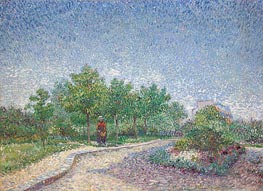
Giclée Canvas Print
$113.46
$113.46
SKU: 12795-VVG
Vincent van Gogh
Original Size:59.4 x 81.3 cm
Yale University Art Gallery, Connecticut, USA
Vincent van Gogh
Original Size:59.4 x 81.3 cm
Yale University Art Gallery, Connecticut, USA

Giclée Canvas Print
$61.81
$61.81
SKU: 12799-VVG
Vincent van Gogh
Original Size:46.2 x 33.3 cm
Van Gogh Museum, Amsterdam, Netherlands
Vincent van Gogh
Original Size:46.2 x 33.3 cm
Van Gogh Museum, Amsterdam, Netherlands
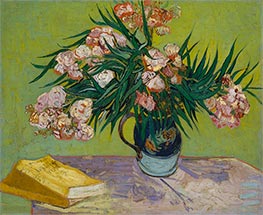
Giclée Canvas Print
$76.65
$76.65
SKU: 1265-VVG
Vincent van Gogh
Original Size:60.3 x 73.7 cm
Metropolitan Museum of Art, New York, USA
Vincent van Gogh
Original Size:60.3 x 73.7 cm
Metropolitan Museum of Art, New York, USA
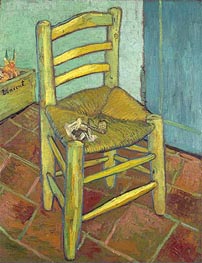
Giclée Canvas Print
$72.91
$72.91
SKU: 1108-VVG
Vincent van Gogh
Original Size:91.8 x 73 cm
National Gallery, London, UK
Vincent van Gogh
Original Size:91.8 x 73 cm
National Gallery, London, UK
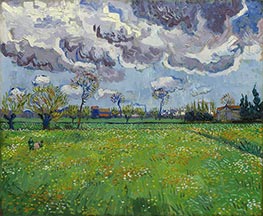
Giclée Canvas Print
$76.99
$76.99
SKU: 1295-VVG
Vincent van Gogh
Original Size:60.5 x 73.7 cm
Private Collection
Vincent van Gogh
Original Size:60.5 x 73.7 cm
Private Collection

Giclée Canvas Print
$64.60
$64.60
SKU: 1236-VVG
Vincent van Gogh
Original Size:73.4 x 93.7 cm
Detroit Institute of Arts, Michigan, USA
Vincent van Gogh
Original Size:73.4 x 93.7 cm
Detroit Institute of Arts, Michigan, USA
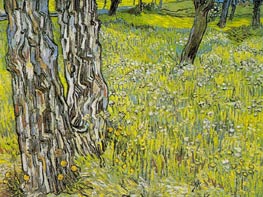
Giclée Canvas Print
$73.93
$73.93
SKU: 1206-VVG
Vincent van Gogh
Original Size:72 x 90 cm
Kroller-Mueller Museum, Otterlo, Netherlands
Vincent van Gogh
Original Size:72 x 90 cm
Kroller-Mueller Museum, Otterlo, Netherlands
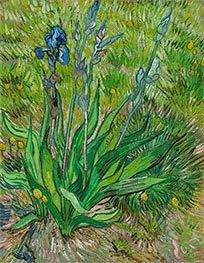
Giclée Canvas Print
$73.07
$73.07
SKU: 1129-VVG
Vincent van Gogh
Original Size:62.2 x 48.3 cm
National Gallery of Art, Ottawa, Canada
Vincent van Gogh
Original Size:62.2 x 48.3 cm
National Gallery of Art, Ottawa, Canada
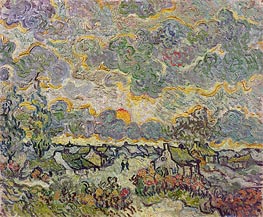
Giclée Canvas Print
$61.81
$61.81
SKU: 1202-VVG
Vincent van Gogh
Original Size:29 x 36.5 cm
Van Gogh Museum, Amsterdam, Netherlands
Vincent van Gogh
Original Size:29 x 36.5 cm
Van Gogh Museum, Amsterdam, Netherlands
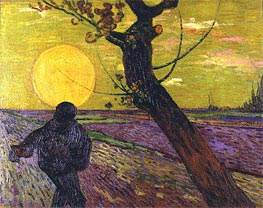
Giclée Canvas Print
$73.93
$73.93
SKU: 1105-VVG
Vincent van Gogh
Original Size:73.5 x 93 cm
E.G. Buehrle, Zurich, Switzerland
Vincent van Gogh
Original Size:73.5 x 93 cm
E.G. Buehrle, Zurich, Switzerland
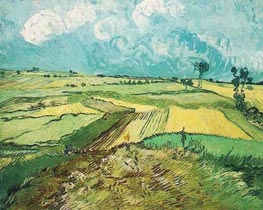
Giclée Canvas Print
$74.27
$74.27
SKU: 1240-VVG
Vincent van Gogh
Original Size:73.3 x 92.4 cm
Carnegie Museum of Art, Pittsburgh, USA
Vincent van Gogh
Original Size:73.3 x 92.4 cm
Carnegie Museum of Art, Pittsburgh, USA